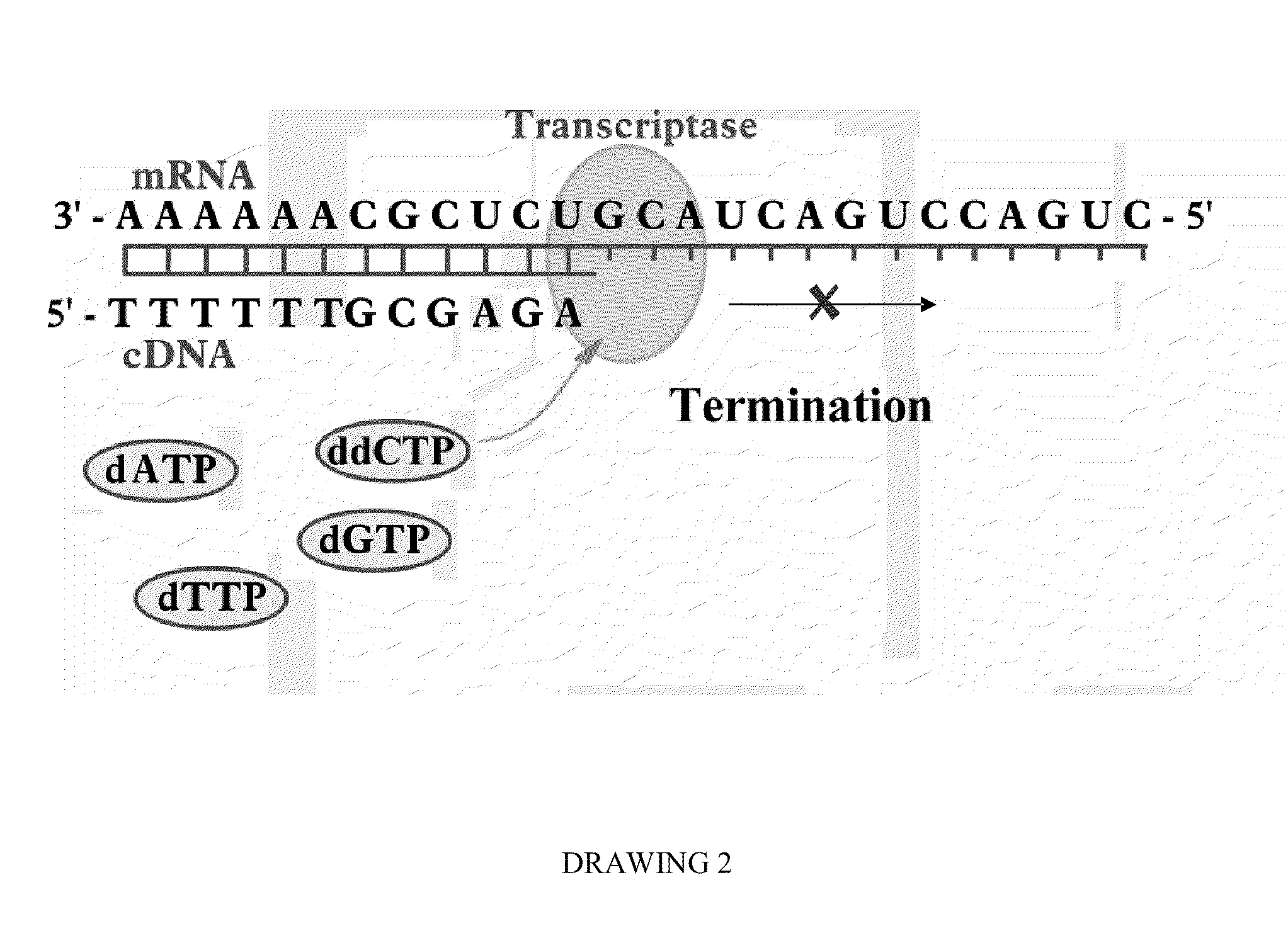Enzymatic time-resolved luminescent assay for nucleic acids quantitation
a luminescent assay and nucleic acid technology, applied in the field of molecular biology, can solve the problems of unreliable quantitative rt-pcr data, difficult to compare results from different platforms and at various experimental conditions, and the nature and extent of unreliability of quantitative rt-pcr data is still not widely appreciated or acknowledged. , to achieve the effect of fast and highly sensitive identification and measuremen
- Summary
- Abstract
- Description
- Claims
- Application Information
AI Technical Summary
Benefits of technology
Problems solved by technology
Method used
Image
Examples
example 1
Time-Resolved Assay for Pyrophosphate Quantitation in ATP Contaminated Samples
[0082]In this invention a principle of design and practice are disclosed for a high-sensitivity PPi assay, which allows, in a single experiment, measurement of the three components of the luminescence: the PPi component, the ATP component, and the steady-state background luminescence. This is achieved by formulating a multi-enzyme assay, which produces luminescence kinetic with easily distinguishable fast-rising and slow-decaying components. The rising kinetic component is due to conversion of PPi to ATP, and the decaying component is driven by two enzymatic reactions: one involves the consumption of ATP by luciferase and the other the hydrolysis of PPi to inorganic phosphate (Pi) by inorganic pyrophosphatase (PPase). The use of PPase allows assessment of the intensity of steady-state luminescence in biological samples for increasing sensitivity and accuracy of PPi measurements. The method of present inven...
example 2
Detection of DNA Replication
[0091]DNA synthesis reaction by polymerase was performed using a single stranded M13mp18 phage DNA (Sigma, Cat. No. D-8410) and −40 forward primer (5′-gttttcccagtcaggacgttgta-3′) (Seq0001 from the Sequence Listing section of disclosure, incorporated herein by reference). The reaction solution was prepared by addition of 5.0 .mu.l of 10× PCR buffer, 5 .mu.l of 25 mM MgCl.sub.2, 5 .mu.l each of 2 mM dGTP, dCTP, dTTP, 5 .mu.l of 2 mM dATP.alpha.S (e.g., 2′-Deoxy-adenosine-5′(α-thio)-triphosphate), 5 .mu.l of ATP-sulfurylase, 1.5 .mu.l of 50 pmol / .mu.l of primer, 1 .mu.l of the M13 template, and 20 .mu.l of Pyrophosphate Detection Solution as disclosed herein above in illustrative Example 1. To reduce the background luminescencethe dATP has been substituted with dATP.alpha.S (e.g., 2′-Deoxy-adenosine-5′(α-thio)-triphosphate). Before addition to the reaction solution the M13 DNA was annealed at 95° C. for 1 min and placed on ice for 3 min. The reaction solutio...
example 3
Programmable Termination of Reverse-Transcription Reaction
[0092]It is appreciated that a number of factors may affect the accuracy of measurement DNA and RNA targets in sample substance by enzymatic luminescence assays. These factors may include variation of the lengths of synthesized cDNAs due to the length distribution of DNA and mRNA target molecules, as well as interruptions of the replication reaction by DNA and RNA secondary structures. In some cases at optimized conditions, for instance, using high fidelity PCR Enzyme Mix (e.g., Epicentre's MonsterScript transcriptase in combination with addition of Betaine) a synthesis of cDNA exceeding 15 kb can be achieved (Epicentre Biotechnology, MonsterScript Reverse Transcription Kit, Cat. No. MS040910). Yet, in many applications the size of cDNA is limited to less than 3,000 bases and, the longer cDNA molecule is synthesized, the more the synthesis reaction is influenced by difficult-to-control factors.
[0093]To have an analytical qual...
PUM
| Property | Measurement | Unit |
|---|---|---|
| time | aaaaa | aaaaa |
| time | aaaaa | aaaaa |
| decay time | aaaaa | aaaaa |
Abstract
Description
Claims
Application Information
 Login to View More
Login to View More - R&D
- Intellectual Property
- Life Sciences
- Materials
- Tech Scout
- Unparalleled Data Quality
- Higher Quality Content
- 60% Fewer Hallucinations
Browse by: Latest US Patents, China's latest patents, Technical Efficacy Thesaurus, Application Domain, Technology Topic, Popular Technical Reports.
© 2025 PatSnap. All rights reserved.Legal|Privacy policy|Modern Slavery Act Transparency Statement|Sitemap|About US| Contact US: help@patsnap.com



